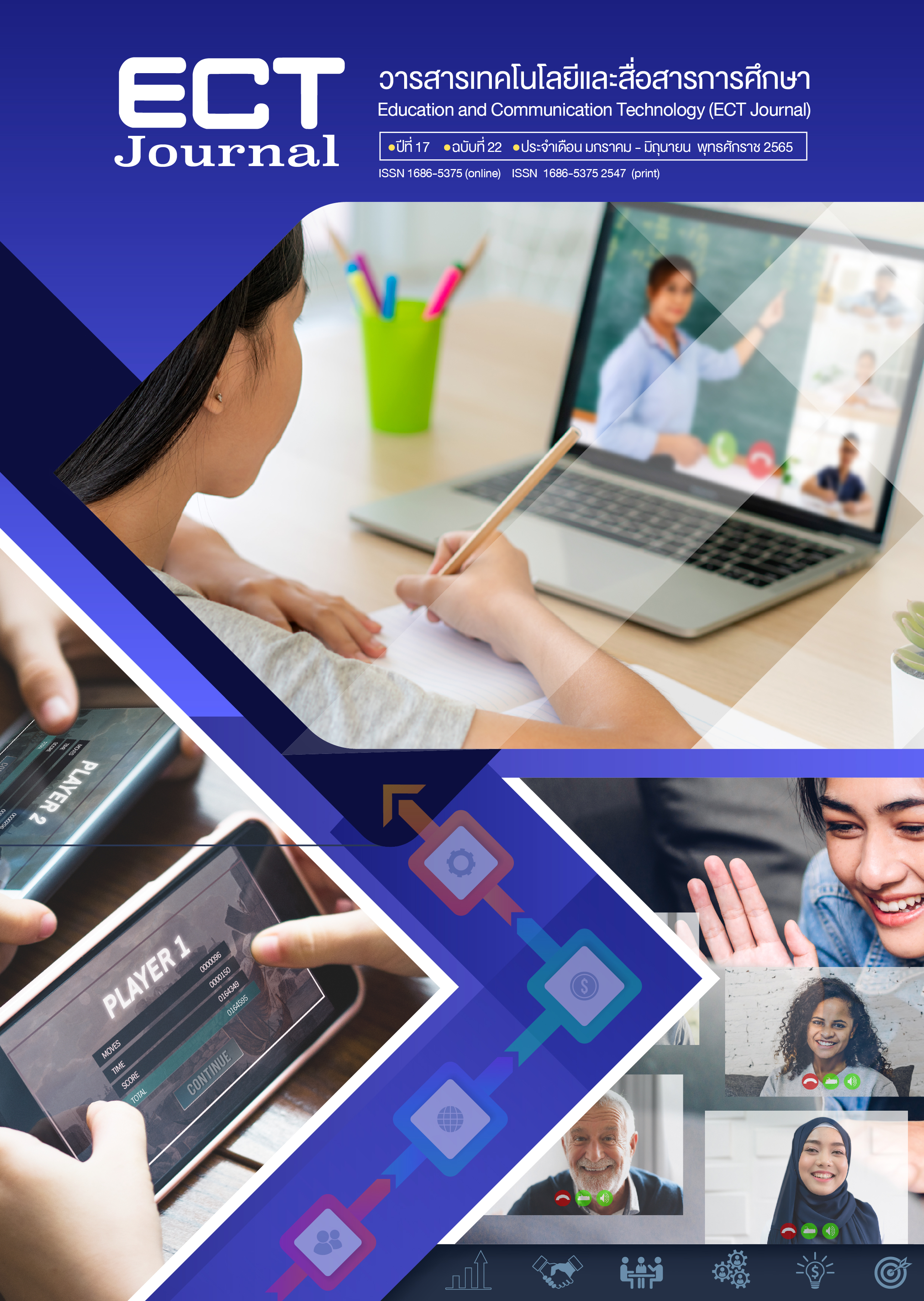An Online Instructional Model with Information Technology during Covid-19
Keywords:
Online Teaching, Technology, COVID-19, online instructional modelAbstract
The objectives of this research were to: 1) design an online Instructional model with information technology during COVID-19; 2) study the satisfaction of learners towards the online Instructional management with information technology during COVID-19. The population and samples in the research consisted of 21 learners in the Digital Literacy subject. The research instrument consisted of a questionnaire for assessing the satisfaction of learners towards online instructional model with information technology during covid-19. The statistics employed for verifying the efficiency are percentage, mean and standard deviation.
The results revealed that:
1) The online Instructional model with information technology during covid-19. There are 3 main components: the learner component, teacher component and the component of instructional management technology;
2) Overall, results of the students' satisfaction effect on the online Instructional management with information technology during covid-19 was 4.15 which was at a high level with standard deviation 0.97 and 83.93%.
References
กรมควบคุมโรค. (2564). สถานการณ์โรคติดเชื้อไวรัสโคโรนา 2019 (COVID-19) มาตรการสาธารณสุข และปัญหาอุปสรรคการป้องกันควบคุมโรคในผู้เดินทาง. https://ddc.moph.go.th/viralpneumonia/info.php
ปราวีณยา สุวรรณณัฐโชติ. (2563). การปรับรูปแบบการเรียนการสอนสู่ระบบออนไลน์. จุฬาลงกรณ์มหาวิทยาลัย. https://www.chula.ac.th/news/29935/
มหาวิทยาลัยสวนดุสิต ศูนย์การศึกษาตรัง. (2564). สรุปผลการสำรวจความพร้อมและความคิดเห็นในการจัดการเรียนการสอนแบบ ONLINE. http://trang.dusit.ac.th/web/category/news/
วิจารณ์ พานิช. (2556). วิถีสร้างการเรียนรู้เพื่อศิษย์ในศตวรรษที่ 21. มูลนิธิสดศรี-สฤษดิ์วงศ์. https://www.scbfoundation.com/publishing/3196/3196
วิทยา วาโย, อภิรดี เจริญนุกูล, ฉัตรสุดา กานกายันต์, และจรรยา คนใหญ่. (2563). การเรียนการสอนแบบออนไลน์ภายใต้สถานการณ์แพร่ระบาดของไวรัส COVID-19: แนวคิดและการประยุกต์ใช้จัดการเรียนการสอน. วารสารศูนย์อนามัยที่ 9, 14(34), 285-298. https://he02.tci-thaijo.org/index.php/jhealthmedia/article/view/241940
สุสัณหา ยิ้มแย้ม, อารีวรรณ กลั่นกลิ่น, และจริยา วิทยะศุภร. (2558). การพัฒนาการจัดการเรียนรู้แบบผสมผสานเพื่อพัฒนาทักษะการเรียนรู้ในศตวรรษที่ 21. วารสารพยาบาลสาร, 42(พิเศษ), 129-140. https://he01.tci-thaijo.org/index.php/nur-psu/article/view/41415
Klausmeier, H. J., & Ripple, R. E. (1971). Learning and human abilities: Educational psychology (3rd ed.). Harper & Row. https://www.worldcat.org/title/learning-and-human-abilities-educational-psychology/oclc/145499
Likert, R. (1967). The method of constructing and attitude scale. In M. Fishbein (Ed.), Attitude theory and measurement (pp. 90-95). Wiley & Son. https://www.worldcat.org/title/attitude-theory-and-measurement/oclc/631681
Downloads
Published
How to Cite
Issue
Section
License
Copyright (c) 2022 มหาวิทยาลัยสุโขทัยธรรมาธิราช

This work is licensed under a Creative Commons Attribution-NonCommercial-NoDerivatives 4.0 International License.
1. ทรรศนะและข้อคิดเห็นใด ๆ ที่ปรากฏอยู่ในวารสาร ECT Education and Communication Technology Journal เป็นของผู้เขียนโดยเฉพาะ สำนักเทคโนโลยีการศึกษา มหาวิทยาลัยสุโขทัยธรรมาธิราช และกองบรรณาธิการไม่จำเป็นต้องเห็นพ้องด้วย
2. กองบรรณาธิการของสงวนลิขสิทธิ์ในการบรรณาธิการข้อเขียนทุกชิ้น เพื่อความเหมาะสมในการจัดพิมพ์เผยแพร่






